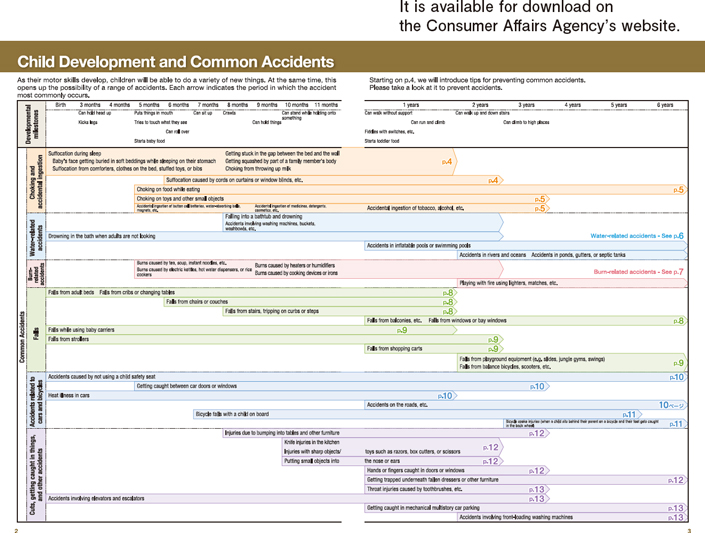Situation of children's accidents
Part 1 : Trends in consumer issues and consumers' attitude/behavior
Chapter 2 : [Feature] Toward the prevention of children's accidents
Section 2 : Situation of children's accidents
1-year-olds are transported in an emergency as a result of daily-life accidents the most.
- Within the Tokyo Fire Department's jurisdiction, children and elderly people make up the major part of the number of patients transported in an emergency as a result of daily-life accidents per population.
- Most notably, the "age 1" group represents the highest number at 232.5 per 10,000 population.
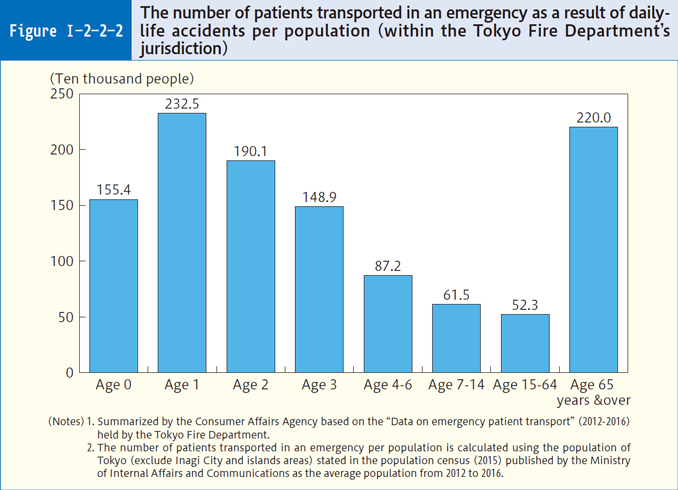
"Trip" and "fall" account for a large percentage of accident types.
- When the number of patients transported in an emergency resulting from daily-life accidents among children is sorted by the type of accident, "trip" and "fall" account for a large percentage in all ages.
- "Fall" from a bed or person's hold is the most common cause of accident among those in the "age 0" group (31.2%), and the second common cause is "choking on something," which accounts for 26.1%.
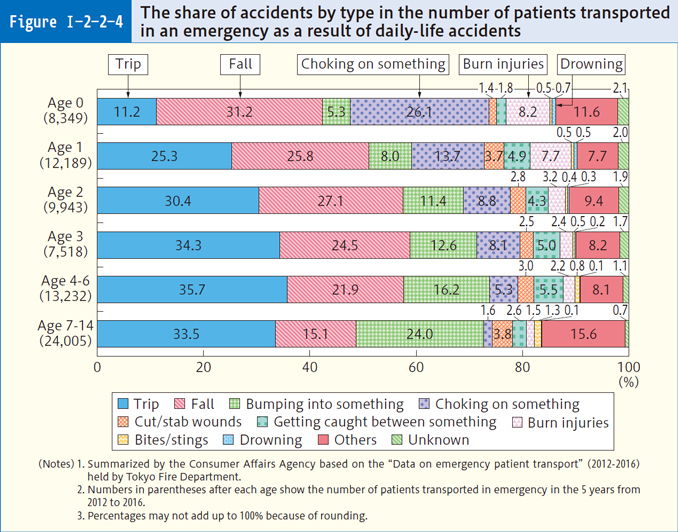
0-year-olds die from falls while being carried by other persons and from beds, and older children die from falls from buildings.
- Looking at the breakdown for the causes of death related to "fall," the common causes among those in the "age 0" group are falls while being carried by other persons and falls on the same level from slipping, tripping and stumbling. Falls from beds also accounted for 18.2%.
- More than 60% of accident causes among children aged 3 & over are falls from buildings or structures.
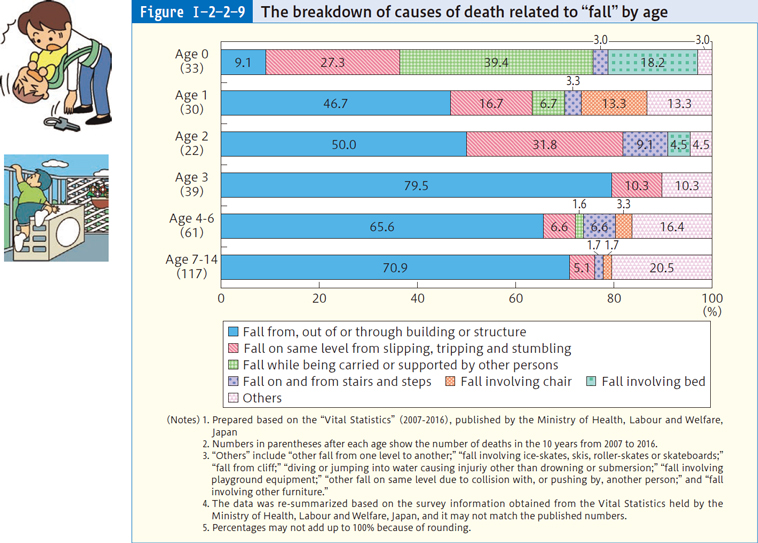
Many drowning accidents happen in bathtubs.
- According to the data on emergency patient transport, more than 90% of "drowning" accidents happen in "bathtubs" among each age group from ages 0 to 2.
- Among children ages 3 & over, the number of accidents at "rivers" increase compared to that of children ages 0 to 2. The number of accidents at "rivers" accounts for 37.9% among the "ages 7 to 14".
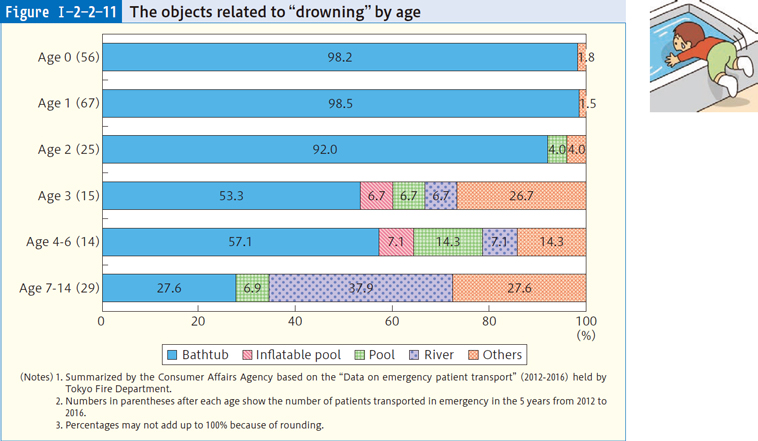
Awareness campaigns on how children's accidents happen
![[Figure] The balcony 1000 Project by Safe Kids Japan (NPO) [Figure] The balcony 1000 Project by Safe Kids Japan (NPO)](/en/publication/annual_report/2018/img/white_paper_summary_25_01.jpg)
![[Figure] Oshiete (Teach me) ! Doctor Project "Children drown without screaming!" (Saku Medical Association, Saku City) [Figure] Oshiete (Teach me) ! Doctor Project "Children drown without screaming!" (Saku Medical Association, Saku City)](/en/publication/annual_report/2018/img/white_paper_summary_25_02.jpg)
![[Figure] The re-enacted scene of an accidental fall from an adult bed [Figure] The re-enacted scene of an accidental fall from an adult bed](/en/publication/annual_report/2018/img/white_paper_summary_25_03.jpg)
![[Figure] Accident Prevention Handbook "Protecting Children from Accidents!!" [Figure] Accident Prevention Handbook "Protecting Children from Accidents!!"](/en/publication/annual_report/2018/img/white_paper_summary_26_01.jpg)
